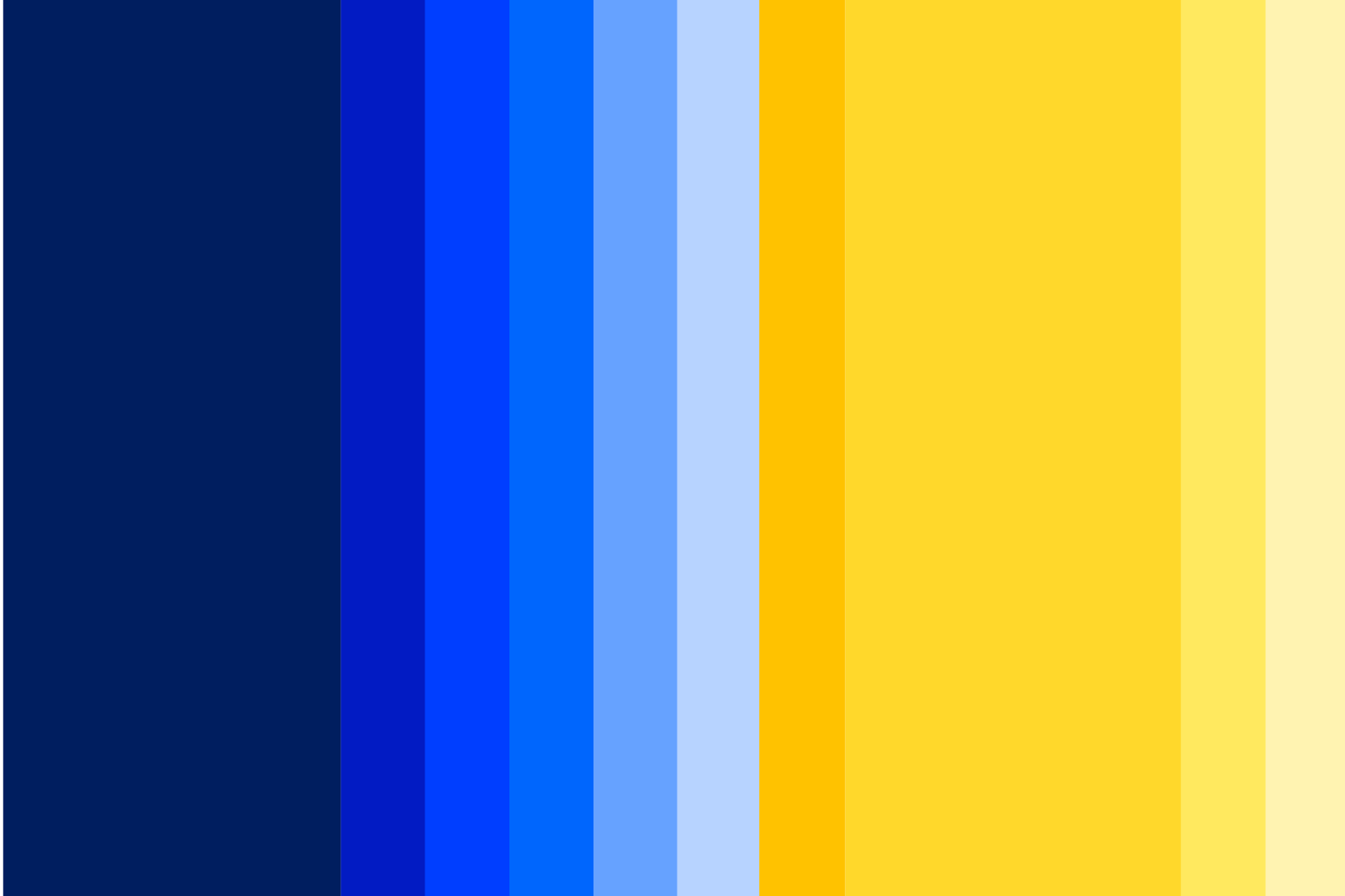URochester Navy
RGB: 0 30 95
CMYK: 100 93 30 29
PMS: 2748 C
HEX: #001E5F

Visual identity
Our expanded color palette helps to express URochester’s story and personality. To maintain consistency and brand recognition, it’s important to use only the approved colors outlined in our brand standards.
Our primary colors are URochester blue and dandelion yellow. These were officially adopted by the Board of Trustees in 1954, though dandelion yellow was first selected by the Alumni Association in 1893. The choice is believed to honor the dandelions that once grew across the University’s original Prince Street campus.
Primary colors should lead wherever possible.
RGB: 0 30 95
CMYK: 100 93 30 29
PMS: 2748 C
HEX: #001E5F
RGB: 255 216 43
CMYK: 0 14 100 0
PMS: Yellow C
HEX: #FFD82B
Our secondary colors include complementary shades of blue and yellow. These tones support the primary palette and offer flexibility across a wide range of communications and design applications.
Secondary colors work best as functional accents—in infographics, data visualizations, or background areas.
RGB: 2 27 195
CMYK: 93 84 0 0
PMS: Dark Blue C
HEX: #021BC3
RGB: 0 62 255
CMYK: 86 71 0 0
PMS: 2728 C
HEX: #003EFF
RGB: 0 102 253
CMYK: 83 59 0 0
PMS: 2130 C
HEX: #0066FD
RGB: 106 162 255
CMYK: 58 30 0 0
PMS: 2718 C
HEX: #66A2FF
RGB: 183 211 255
CMYK: 27 9 0 0
PMS: 2717 C
HEX: #B7D3FF
RGB: 255 194 0
CMYK: 0 27 100 0
PMS: 7548 C
HEX: #FFC200
RGB: 255 233 95
CMYK: 1 4 87 0
PMS: 100 C
HEX: #FFE95F
RGB: 255 243 177
CMYK: 0 2 42 0
PMS: 7499 C
HEX: #FFF3B1
Gray serves as a tertiary color, providing a neutral option when white is not appropriate.
Tertiary colors are used sparingly as neutral supports in layouts or UI elements
RGB: 112 112 112
CMYK: 57 48 48 15
PMS: Cool Gray 9 C
HEX: #707070
RGB: 190 190 190
CMYK: 26 20 21 0
PMS: Cool Gray 4 C
HEX: #BEBEBE
RGB: 232 232 232
CMYK: 8 6 6 0
PMS: Cool Gray 1 C
HEX: #E8E8E8
RGB: 255 255 255
CMYK: 0 0 0 0
HEX: #FFFFFF
It’s important that our communications are accessible to all. The below interactive tool serves as a guide to
approved color combinations that meet accessibility standards. When choosing typography and background colors, always promote visibility and legibility by ensuring sufficient contrast.
* In the charts below, we’ve identified combinations where contrast not sufficient for small text; okay for large text, graphic objects, or UI components
For access to additional assets and guidelines, please reach out to the University Marketing & Communications Brand Marketing team.